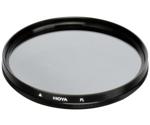
Hoya Pol Linear 62mm - Reviews
(4.6)
70 reviews
Info
Reviewbucket.co.uk scanned the internet for Hoya Pol Linear 62mm reviews.
You can find all Hoya Pol Linear 62mm reviews and ratings on this page.
Analysis
For Hoya Pol Linear 62mm, 70 customer reviews collected from 1 e-commerce sites, and the average score is 4.6.
Detailed seller stats;
Amazon has 70 customer reviews and the average score is 4.6. Go to this seller.
Detail
Similar Items
This filter is indeed a linear filter, and incorporates a double ring. You screw it into the lens and tighten it slightly, gripping the rear ring, and then the direction of polarisation can be altered by rotating the front ring. To fit the 58mm version to my Panasonic GH5 Vario f/2.8 12-35mm lens I had to remove the lens hood which has a bayonet attachment. With the lens hood replaced, I can still rotate the filter by using light finger pressure on the front edge of the ring which is knurled to give grip. The effect of a polarising filter is not small, on a typical blue sky with clouds it is huge, allowing a couple of stops more exposure to be used before cloud detail is lost; that's comparing the optimum angle setting with the ninety degree from optimum setting.
Hoya is cheaper and just as good B+W, Tiffen, etc. It is made in Japan and works well in reducing reflections from foliage and water. This is the one filter every photographer must have (including an ND).There are cheaper makes out there - I never touch them and have always stayed with Hoya.I have several for different size lenses and never had a problem with any over many years.The price through Amazon was competitive and the filter was delivered (as usual) very quickly - to Portugal. EBay prices out of China are sometimes cheaper but I stick with Amazon and generally UK suppliers as I know what I am getting.Highly recommended.
Fantastic! This filter is worth the extra money to ensure no colour cast or abboration. Bought this as well as a couple ND filters to replace the square filters I had. Unfortunately the ND1000 square filter I had gave me a reflection of the lens in all my images and so they were ruined! I didn’t cheap out either, they were Cokin filters so very disappointed. I would absolutely recommend these filters. Hoya is a quality brand with consistency throughout all of their products.
This is all new to me, Filters. I have just invested in this one and a Cokin filter for dramatic skies, dark and moody. I want to rediscover my love for landscape. I have made the right move, this filter is a good one providing one knows how to use it! l have to read up afterwards several articles on how to get the best from it and how to know it. I do know and usually it is permanently attached, highly recommend this filter as a good stable part of kit.
I'm new to photography and recently i've been photographing landscape scenes and waterfalls. I've read that a Polarising filter reduces the amount of reflections and glare, not to mention producing deeper colours!This item does exactly as said, my photos have improved greatly! Especially with blue skies and water reflections.I was also extremely impressed with how long it took to deliver, I got it the next day!!!! Excellent stuff
